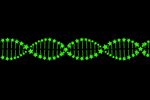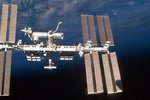Contest updates for Genes in Space 2023
Genes in Space veterans, take note! While the contest you know and love will, in large part, work the same as it has in past years, we have made one important change to this year's competition. Contestant team size will be capped at two, rather than four, teammates. Below, we explain the change and clarify the other eligibility requirements.
Why did the maximum team size change?
This change was dictated by our team's ability to properly support student groups during the finals round of the contest and beyond. In other words: it's not you, it's us!
What if I have already begun working on a proposal as part of a team of three or four students?
Your team will need to divide up so it does not exceed the team size limit. Maybe this means your team of four becomes two pairs, and one pair gets to explore a new idea. Or maybe you will choose to pursue your applications individually. If your team needs to divide, we still encourage you to share your work with each other informally to get feedback and make your proposals as strong as possible.
What are the other eligibility requirements?
Contestants must attend school in the United States, and all team members must be in grades 7-12. Students with immediate family members employed by a contest sponsor organization (miniPCR bio, Boeing, New England Biolabs, and the ISS U.S. National Laboratory) are not eligible to participate. All student proposals must be sponsored by an adult (teacher, parent, or other mentor). In order to advance to the finals round of the contest, at least one team member must be available to present their idea to our contest judges at the ISS Research & Development Conference July 31-August 3, 2023.
Ready to apply? Head to our contest page to learn more and access the application.


